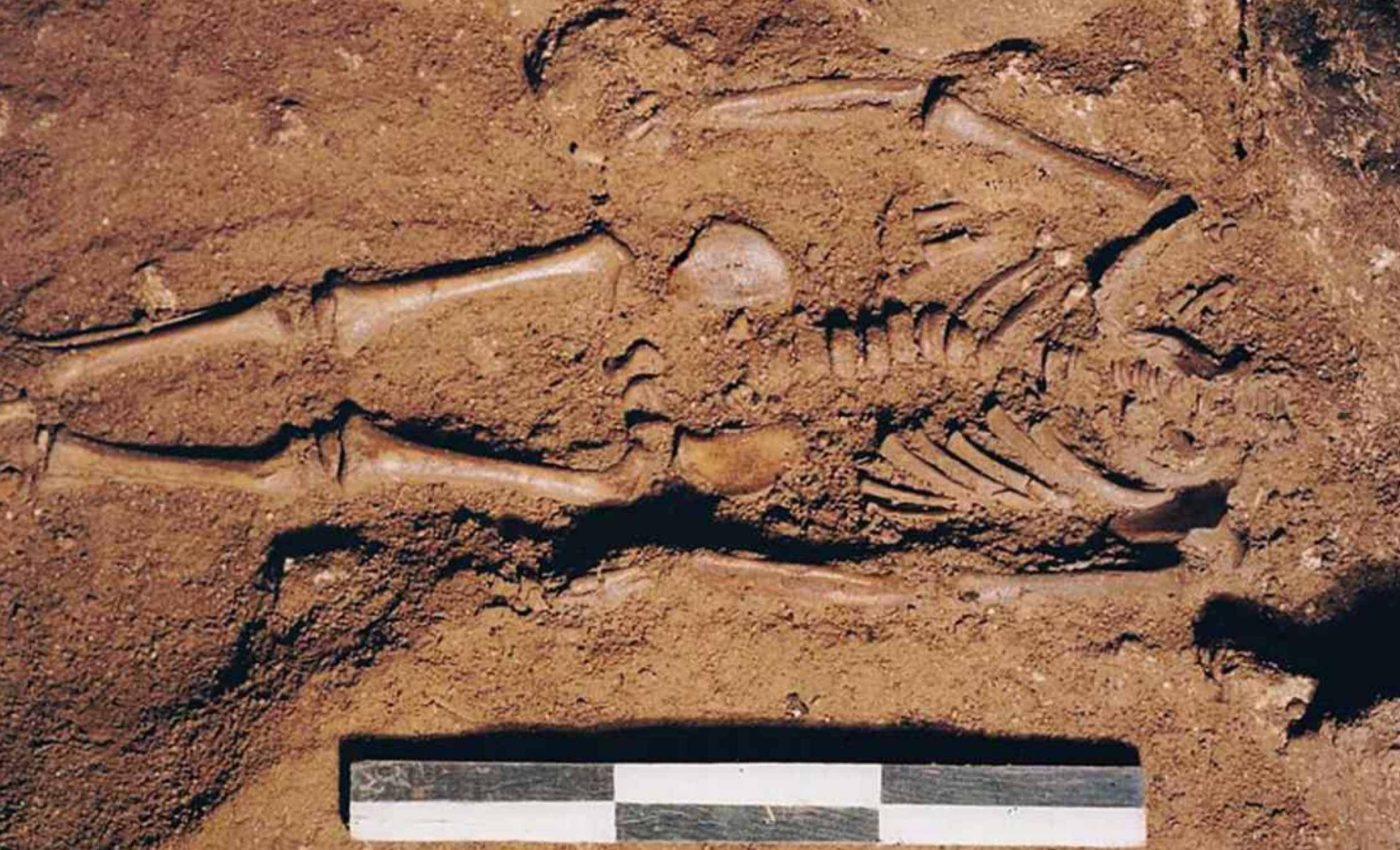
Fossilized remains of a 17,000-year-old baby show first evidence of blue eyes in humans
Seventeen thousand years ago, a family carried an ailing toddler into the cool darkness of Grotta delle Mura, a coastal cave in southern Italy, and laid him beneath two limestone slabs.
Today his tiny skeleton and intact DNA let researchers map an intimate biography that begins in the womb and ends, at just sixteen months old, with a failing heart.
Study co‑leaders Owen Alexander Higgins of the University of Bologna and Alessandra Modi of the University of Florence pieced together that story with colleagues from genetics, dentistry, and geochemistry.
Their work shows that the boy’s bright blue eyes, deep brown skin, and tight curls would have stood out today but were typical for western hunter‑gatherers of the Ice Age.
Unearthing a fragile life
Mauro Calattini first spotted the grave in 1998 while gently brushing sand away from a recess near the cave mouth.
No grave goods accompanied the body, yet the careful stone cover speaks to a community that valued its youngest members.
Radiocarbon dating places the burial just after the Last Glacial Maximum, when ice sheets still gripped much of Europe.
Southern Italy formed a warmer refuge, letting small bands survive as game and plant life rebounded along the Adriatic shore.
Dental growth rings pinpoint the child’s age at death to about seventy‑two weeks. Those microscopic lines also reveal nine episodes of severe physiological stress beginning before birth.
“The detailed analysis of the infant’s teeth allowed us to infer the health and stress experienced by the child during infancy and/or his mother during pregnancy, something we rarely have the opportunity to explore with such precision,” wrote Higgins and Modi.
Reading clues from tiny bones
A healed fracture on the left clavicle likely occurred during labor, hinting at a difficult delivery. Far subtler signals came from trace elements locked in the enamel of two teeth.
Researchers tracked strontium isotopes along those teeth and found values matching local bedrock, suggesting the mother stayed close to the cave as her pregnancy progressed.
Limited movement fits with a small, perhaps seasonally settled group that foraged within a narrow radius.
Each growth defect in the enamel lasted days to weeks, meaning the baby repeatedly fought infection, hunger, or hypoxia.
Such cumulative stress can compound underlying medical problems, and the genome offered a critical clue.
A heart that could not keep pace
“Hypertrophic cardiomyopathy is often inherited and is a common form of genetic heart disease,” notes the American Heart Association.
The team detected two rare variants in genes TNNT2 and MYBPC3, both tied to hypertrophic cardiomyopathy, a disorder that thickens the heart wall.
Modern clinicians diagnose the condition in roughly one of every five hundred Americans, yet many cases remain silent until sudden cardiac arrest.
In an Ice Age setting without advanced care, even mild obstruction could prove fatal during a respiratory infection or prolonged crying spell.
Genetic data also indicate the baby’s parents were first cousins. Close‑kin unions were not the norm for Upper Paleolithic Europe, but they become more likely in tiny, isolated populations.
What the burial tells us
The absence of grave goods in the cave burial raises questions about cultural practices among Ice Age groups in southern Italy.
Though the community carefully placed the body under stone slabs, they included no offerings or ornaments, suggesting a ritual rooted in simplicity or necessity.
This could reflect the child’s young age, limited access to resources, or differing views on death and memory among Paleolithic families.
Researchers believe that burial itself, rare for infants of the era, points to emotional bonds and social structure within the small group.
Genes that link past and present
Whole‑genome analysis places the child within the Villabruna cluster, the lineage that swept into Europe after the coldest phase of the Ice Age and later became the dominant ancestry for western hunter‑gatherers.
Finding that signature so far south pushes the arrival of Villabruna ancestry on the Italian peninsula back thousands of years earlier than previously proven.
The same DNA shows about 2.3 percent Neanderthal inheritance, standard for Europeans, and no trace of the earlier Gravettian peoples who once dominated the region.
Taken together, the results support a rapid north‑to‑south migration of new families during a period of environmental upheaval.
Why this matters
Ice Age burials of infants are exceedingly scarce, and none previously offered such a clean molecular record.
Because teeth grow in daily layers, researchers could align genetic, chemical, and skeletal data along a precise personal timeline.
That fusion of techniques lets science move beyond broad population sketches to individual life stories. It also shows how medical genetics can illuminate ancient lived experiences, bridging laboratory insights with human empathy.
The study is published in Nature Communications.
—–
Like what you read? Subscribe to our newsletter for engaging articles, exclusive content, and the latest updates.
Check us out on EarthSnap, a free app brought to you by Eric Ralls and Earth.com.
—–













